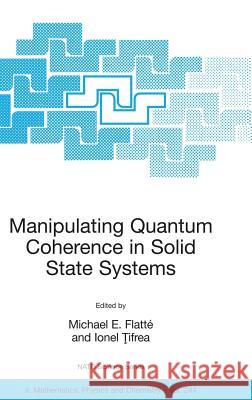Manipulating Quantum Coherence in Solid State Systems » książka
Manipulating Quantum Coherence in Solid State Systems
ISBN-13: 9781402061349 / Angielski / Twarda / 2007 / 234 str.
Manipulating Quantum Coherence in Solid State Systems
ISBN-13: 9781402061349 / Angielski / Twarda / 2007 / 234 str.
(netto: 384,26 VAT: 5%)
Najniższa cena z 30 dni: 385,52 zł
ok. 22 dni roboczych
Bez gwarancji dostawy przed świętami
Darmowa dostawa!
The lectures at the NATO Advanced Study Institute Manipulating Quantum Coherence in Solid State Systems presented a fundamental introduction to three solid-state approaches to achieving quantum computation: semiconductor spin-based, semiconductor charge-based, and superconducting approaches. The purpose in bringing together lecturers and students in these disparate areas was to provide the opportunity for communication and cross-fertilization between these three areas, all focusing on the central goal of manipulating quantum coherence in solids. These proceedings present detailed introductions to the fundamentals of the ?rst approach and the third approach, and as such bring together a fundamental pedagogical treatment of the two areas which have progressed the furthest towards realizing a scalable system of manipulable qubits. Semiconductor spin-based approaches to quantum computation have made tremendousadvancesinthepast severalyears. Individual spinshavebeen succe- fully con?ned within self-assembled quantum dots and lithographically-formed quantum dots. Within the self-assembled quantum dots the spin lifetimes have been measured and shown to be longer than 1 ms at low temperature. Lithographic dots have been used to controllably reorient nuclear spins in order to lengthen the spin lifetimes. These exceptionally long spin lifetimes should permit many spin operations (qubit operations) within a decoherence time. Coherent spin transfer has also been demonstrated between two colloidal dots connected by polymer chains. Spins can be localized on dopant atoms, such as manganese atoms in gallium arsenide. These spins can be oriented, manipulated and detected with a- electrical means. Electrical techniques can also be used to manipulate nuclear spins, and eventually to drive nuclear magnetic resonance."











